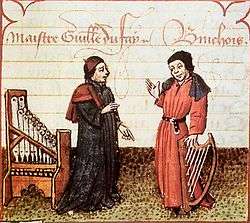|
Back
A Medieval Alchemy New York
Medieval Sculpture Hall, Metropolitan Museum of Art
12/16/2012 -
Gregorian Chant: Rorate Caeli
Michael Harrison: Chant (World premiere)
Guillaume Dufay: Moribus et genere (Arranged by John Pickford Richards)
Sasha Zamler-Carhart: The Saint Francis String Quartets (World premiere)
Rodericus: Angelorum psalat (Arranged by Christopher Otto)
Caleb Burhans: Contritus
The JACK Quartet: Christopher Otto, Ari Steisfeld (Violins), John Pickford Richards (Viola), Kevin McFarland (Cello)

The JACK Quartet (© Stephen Poff)
The first Christmas concert in the Medieval Sculpture Room of the Metropolitan Museum last week was a 20th Century adoration of the most ancient Christian beliefs, Olivier Messiaen’s monumental Vingt Regards sur l’Enfant-Jésus. The second concert last week had music written during that ancient Century of Pure Belief, but these were 13th Century mainly secular works, where the Church was but one of several subjects.
The JACK Quartet offered, last night, an hour of Holiday Syncretism. Ancient composers were transposed and/or altered by members of the JACK Quartet. Composers of today (two of whom were in the audience) were obviously inspired by Medieval tropes and structures and crafted their works accordingly.
The result was intriguing, never boring (well, one exception) and as played by the always astonishing JACK Quartet, an homage, a celebrations and (to use the appropriate Medieval phrase) a Meed of Praise.
The opening work was a Gregorian chant with magnificent words (“Fall down, oh heavens, to let the sky pour with righteousness”), beginning with the vocal chant pre-recorded by the cello. After this, Cellist Kevin McFarland, who had sat alone with his instrument, repeated it live (as if in another part of the monastery). Then he was joined by the other members of the quartet who continued with descants and developments from two centuries later, returning to the original It was pious opening.
The rest of the concert alternated between original Medieval and contemporary, the latter a fascinating challenge.
Born to that challenge was that eclectic French composer, with deep roots in America, Sasha Zamler-Gabart, who is a scholar of Latin as well as Machaut, Rameau and Renaissance music. Describing himself as a “pragmatic anarchist” (the imagination soars!), he has made deep studies in the music of Gabon, Cameroon and most of what was once French West Africa.
He was present last night for the world premiere of his two-movement Saint Francis String Quartets, which I was disappointed to find didn’t live up to his singularly eclectic resumé. Both sections began with a kind of ancient chant, and the first then went into a sort of African jig. I don’t know West Africa the way Mr Gamler-Zabart does, but in Uganda, these tunes are popular for the xylophone, and even when I used to hear them , the jigs had a 12th Century feel, as if written for recorder and drum.
The second movement, since we were in a Latin mood last night, I would humbly call In saecula saeculorum. It did go on endlessly eternally, all four instruments playing together in close-knit harmonies, in one or two keys, but I quickly lost interest.
More interesting was the final piece, Caleb Burhans’ Contritus, based on three prayers. It could have been equally based on Arvo Pärt’s Fratres. Each supplication was repeated over and over again, but with simple and very beautiful variations on each instrument. Each few measures were jewel-like, the pizzicati, the harmonics, the variations on bowings leading one into a kind of meditative stance.
The resemblance to Fratres from this first-time listener was probably mistaken, and the composer probably would have given a better explication. But frankly, Arvo Pärt’s work, which still is beautiful, has become as emblematic as the Adagio for Strings or Zarathustra, and I was enchanted by a new original piece.
The opening modern piece was by the renowned musical theorist and composer Michael Harrison, whose philosophical-musicological scales are epic. At first hearing, his Chant seemed modal in concept, but without more information, I can only say it had an elegance and stately beauty all its own.

G. Dufay, G. de Binchois
(© Martin le Franc: Le Champion des dames, from Wikipedia.org)
Onto the older composers. The only literal transposition was the richly harmonic motet by Guillaume Dufay, for good reason, since the 14th Century master was far from simple. His harmonies, his progressions lent themselves perfectly to a string quartet.
The most mysterious composer was one Rodericus, about whom we have only a single work, written around 1399. Why is Angelorum psalat so relatively well known, even if the composer himself is a shadow? First, the words were controversial (it was probably a metaphorical political statement about the corruption of the Papal Court at Avignon) Musically, not only were the harmonies a bit eccentric, but the rhythms were altered back and forth.
In the original (which I heard on YouTube), this wasn’t so apparent. But First Violinist Christopher Otto arranged it so that these little quirks were more apparent, tilting this way and that, holding our attention, while never really departing from the original.
(One note. Rodericus was probably a musician serving the Court of Alfonso the Magnanimous. I only wish that my own parents had dubbed me Harry the Magnanimous. It has a more euphonic ring.)
Like everything played by the JACK Quartet, the sounds were ravishing, the perfection of the four players were frequently their own reward. And again, departing from the auditorium through the portals, icons and statuary of the Met’s Medieval Sculpture Hall was, after these heavenly aural orisons, like a visual Benediction.
Harry Rolnick
|